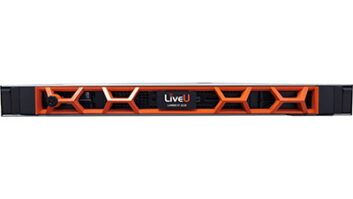
The broadcast industry has always been one that revolves around the latest technological innovations, and no current discussion around key trends and predictions would be complete without a look at 4K.
The term ‘4K’ (or Ultra HD, as it is often called) was first introduced into the public vernacular largely by television manufacturers touting it as the next big thing in broadcasting. However, this was at a time when a large majority of the public had only just started to get to grips with HD technology and the difference it could make to their viewing experience. To put things into perspective, it was also around the same time that 3D began to lose favour. To start preaching about another game-changing technology at this point resulted in information overload for many.
This slightly clumsy initial introduction to 4K technology led many to believe that it would be nothing but a fad – after all, no consumer wants to buy a brand new HD television only to be told the next day that they should actually be buying a 4K display. However, over the last few years, consumers have fallen in love with ever-larger screens, which in effect dragged 4K into the homes – even though very little 4K content has been available to watch. Recent research found that more than a quarter of all TV sales worldwide in 2016 compromised of 4K displays, and these sales are forecast to grow a further 38 per cent in 2017 to make up more than a third of the worldwide TV market. This means broadcasters are now taking 4K seriously.
Of course, the production of such high-resolution video is a challenge, as is the transport of that content within the studio and production environment, and from venues such as stadiums. While the challenge of ultimate delivery of this content to the viewer can be overcome using compression, in the production environment there are many more feeds to contend with, often uncompressed and where little to no latency is essential. And that necessitates a large amount of bandwidth.
The transport of 4K can be handled as four separate but synchronized SDI HD-3G signals (SDI being only properly defined up to 3G). Clearly though, this is a ‘quick-fix’, and if 4K gains serious traction (as it looks to be), it may well become one the biggest driver for a move to IP (and if it isn’t, HDR will be). Over the last few years, IP has emerged as the method of choice for those looking for an agile, flexible and cost-effective solution for broadcast and production, but most importantly in the case of 4K, it offers two main advantages over SDI. Firstly, with the right network architecture in place, it can scale easily to accommodate ever increasing bandwidth requirements. Secondly, IP is format-agnostic – able to transport 4K, HDR, or even 8K, as long as the signals are converted to IP packets – thereby offering future-proofing.
As mentioned before, consumers are buying 4K-ready TV screens, even though there is very little native 4K content available for them to enjoy. While 4K might be quite compelling for certain types of programming, such as sports, wildlife documentaries and films, it’s not clear whether viewers will actually be willing to pay more for 4K content. There is a strong possibility that 4K will be like HD, i.e. a technology that gives a small advantage to first movers, but does not really translate into increased revenues for broadcasters – just additional capital expenditure. So broadcasters need to evaluate carefully to what extent, and when they will jump onto the 4K express.
At the back of their minds, they will recall what happened with 3D – lots of hype but not much success. That said, 4K is likely to be more successful than 3D for many reasons, including the fact that viewers are not required to wear silly goggles!
In what is a promising indicator of the near future, there are a handful of broadcasters that have already taken on this overwhelming task. In the UK, both BT Sport and Sky Sports have recently been able to deliver live coverage of major Premier League and Champions League matches in 4K quality, thanks to their IP-based production and broadcast infrastructure. And just earlier this year, the BBC announced it will be rolling out IP technology across all its sites in the UK, starting with the BBC Cymru (Wales) facility. This is a clear indicator of the broadcaster’s desire to put the wheels in motion in regards to creating native 4K content for its audiences.
So, it seems clear that 4K is here to stay and if broadcasters want to achieve success then they must take the technology very seriously indeed. As part of this, they should be considering how they can provide native 4K content to the masses, and the role that IP technology can playing in making that job faster and easier.
By Olivier Suard, vice president, marketing, Nevion (pictured)







